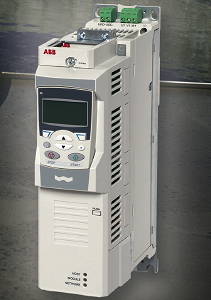Drives modules aim to clean up in the water industry
![]() At the Hannover Fair in Germany, ABB has unveiled a range of low-voltage AC drive modules dedicated to applications in the water and wastewater industry. Although the ACQ810 modules – which cover ratings from 1.1–400kW at 380–480V – are intended primarily for controlling pumps, they can also be used for other energy-saving duties, such as controlling fans.
At the Hannover Fair in Germany, ABB has unveiled a range of low-voltage AC drive modules dedicated to applications in the water and wastewater industry. Although the ACQ810 modules – which cover ratings from 1.1–400kW at 380–480V – are intended primarily for controlling pumps, they can also be used for other energy-saving duties, such as controlling fans.

The drives are aimed at a global market already worth $320m and predicted to reach $500m by 2011. Sales to the water and wastewater industry represent about 10% of the global drives market, and around 80% of the applications involve pumps. But only 20–25% of pumps used in the water industry are thought to be speed-controlled at present, representing a large potential market still to be tapped.
The IP20-protected drives modules are suitable for single or parallel pump installations. Built-in “intelligent” functions help to save energy and to maximise uptime. These functions include:
• Flow calculation, which provides a flow meter routine that determines flow rates accurately, thus avoiding the need for costly external flow meters, and helping to manage leaks.
• Soft pipe filling, which increases flow in pipes smoothly to extend the lives of the pipes and the pumping equipment, and to reduce leaks caused by water surges.
• Sleep and boost, which detects slow pump rotation and runs the pump to boost pressure before an overnight shutdown, and then monitors the pressure continuously and restarts pumping when the pressure falls below a minimum level.
• Pump cleaning, which prevents pumps and pipes in wastewater pumping stations from clogging by initiating a sequence of forward and reverse runs of the pump to clean the impeller.
• Multi-pump control, for operating pumps efficiently in applications where several pumps operate in parallel and the flow rate is variable.
• Redundancy, which keeps other pumps running when one or more pumps in an installation fail or require maintenance.
• Shared information, which shares data between drives connected in parallel for multi-pump systems, making I/O cabling connections easier and faster, and cutting installation costs.
• Level control, which prevents sediment build-up on tank walls by varying the surface level randomly within a preset range.
• Pump auto change, which balances the operating time of pumps in parallel pumping systems, thus helping to increase the mean time between repairs and to reduce service costs.
• Pump priority, which operates pumps close to their best efficiency point in systems where the consumption rate varies depending on demand.
ABB says that the drive modules will achieve energy savings of up to 50% in some installations, providing payback periods of less than two years. The energy and CO2 savings produced by the module are shown on an energy counter, which displays savings in kWh, or local currencies. Energy consumption can be compared to previous periods of time defined by the user and if there is an increase in energy consumption, an alarm is raised.
An energy optimiser algorithm enhances pumping system efficiencies further. When a pump system operates at partial load, its motor magnetising current is reduced, thus lowering the losses of the motor and drive. The optimiser is also said to cut motor noise levels.
The drive module has pre-programmed application macros that configure it for typical pumping tasks in both single- and multi-pump installations. The user is helped by an intuitive user interface with several assistant screens. These include: a start-up assistant, that guides the user through essential settings; a maintenance assistant, that indicates the drive`s maintenance needs of the drive, motor or pump; and a diagnostic assistant, that helps to locate failures or reasons for performance changes, and suggests remedies.





